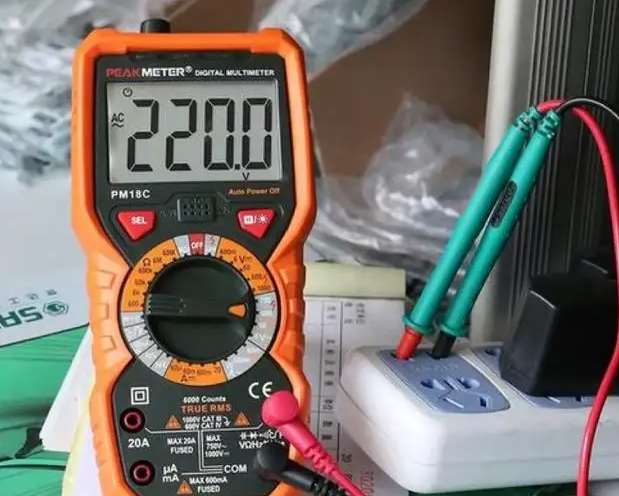What is DC Voltage?
DC voltage refers to the voltage in which the direction of current remains constant in time. In a direct current circuit, the direction of charge flow is always the same, and the current does not change direction. Dc voltage is usually provided by DC power supplies, such as batteries, solar cells, etc.
DC Voltage Features
Dc voltage is characterized by good stability and can provide continuous power supply. Dc voltage has no frequency, compared with AC voltage, DC voltage waveform is straight line, there is no periodic change, so there is no frequency concept. Dc voltage can only conduct in one direction and has unidirectional conductivity. The DC voltage provides a continuous power supply and is suitable for equipment that needs power for a long time.
DC Voltage Advantages
Dc constant voltage has the advantage of high stability and is not affected by the frequency of the grid. This makes DC voltage more reliable in devices with high voltage requirements. In addition, the transmission loss of DC voltage is small, and the energy loss of DC voltage in the transmission process is small, making the power transmission more efficient. This is especially important for power transmission over long distances. Moreover, the DC voltage regulation is convenient and can be adjusted through the voltage regulator circuit, so that the equipment can adapt to different working environments. This flexibility of regulation makes DC voltage widely used in various electronic devices.
ALSO READ: Multi-port DC to DC Converter
What is DC jakelectronics.com/productdetail/feigelectronic-360500000-1770567">electronics.com/">jakelectronics.com/productdetail/sgmicro-sgm809xxn3tr-20982402">www.jakelectronics.com/blog/what-is-the-symbol-for-microfarads-on-a-multimeter">microfarads-on-a-multimeter">voltage symbol?
The symbol of the DC voltage is usually V and the unit is volts (V). Positive and negative polarity is often used to indicate the direction of the voltage. For example, a positive DC voltage indicates that charge flows from the positive electrode to the negative electrode, while a negative DC voltage indicates the opposite direction.
DC voltage and AC voltage
Ac voltage refers to the voltage signal in an AC circuit whose voltage value changes in a periodic manner with time. Ac voltages can be represented by sine waves or other waveforms, with certain frequencies and amplitudes.
The main characteristic of AC voltage is periodic change, that is, the voltage value shows a repeated waveform with time. It can be transformed by a transformer to achieve outputs of different voltage levels. Because AC voltage has the characteristics of easy transmission and transformation, AC voltage is widely used in energy transmission and distribution, such as home power supply, industrial equipment, communication systems and other fields.
DC Voltage symbol and AC Voltage symbol
The symbol for AC voltage is represented by ~, and it is commonly abbreviated as AC. The symbol for DC voltage is represented by a dash -, and it is commonly abbreviated as DC.

The difference between AC voltage and DC voltage
Waveform:
AC voltage is represented by a sinusoidal wave or other waveforms, exhibiting periodic variations.
DC voltage has a constant waveform, appearing as a horizontal line with a constant voltage value.
Variation:
AC voltage undergoes periodic changes in voltage value over time with alternating positive and negative half-cycles.
DC voltage maintains a constant voltage value without any changes over time.
Polarity:
AC voltage experiences a change in current direction with each alternating half-cycle of voltage.
DC voltage has a fixed polarity, where the current flows consistently in one direction.
Application scenarios:
AC voltage is widely used in fields involving energy transmission and distribution, such as household power supply, industrial equipment, and communication systems.
DC voltage finds extensive application in electronic devices and systems that require stable power supply, such as electronic equipment, computers, chargers, electric vehicles, and more.
ALSO READ:DC Voltage: What is it? (Circuit Symbol & Wire Color Codes)
What is the symbol for dc voltage on a multimeter

A multimeter is a versatile tool widely used in electronic measurements due to its multiple functions, wide range of measurement capabilities, and ease of use. It can measure resistance, AC and DC voltage, and some multimeters can also measure key parameters of transistors and electrical quantities.
The basic functions of a multimeter are to measure resistance, AC and DC voltage, AC and DC current, and continuity. The symbol for DC voltage on a multimeter is "DC".
DC voltage is typically represented by "DC" or a horizontal line, while AC voltage is generally indicated by "AC" or a wavy line resembling a sine wave. For a multimeter, AC voltage is commonly written as "ACV" or "V~", and AC current is written as "ACA" or "A~".
If the magnitude and direction of voltage vary with time, it is called varying voltage. For circuit analysis, one of the most important types of varying voltage is sinusoidal AC voltage, which follows a periodic variation pattern according to a sine wave. The instantaneous value of AC voltage is represented by lowercase "u" or u(t). The device that provides voltage in a circuit is called a power supply.
ALSO READ: What is the Capacitor Symbol on a Multimeter
DC voltage applications
1) Electronic Devices: DC voltage is widely used in various electronic devices such as computers, smartphones, televisions, and more. DC voltage provides stable power supply to ensure the normal operation of these devices.
2) Electric Motors: DC voltage is used to drive electric motors, including electric vehicles, electric machinery, and more. DC voltage provides continuous power to enable the proper functioning of electric motors.
3) Energy Storage: DC voltage is used for energy storage purposes. For example, solar panels convert solar energy into DC voltage for storage, ensuring availability for later use.
4) Communication Systems: DC voltage plays a crucial role in communication systems. For instance, DC voltage in telephone lines is used for signal transmission.
useful video:
How to use Digital Multimeter (DMM)?






